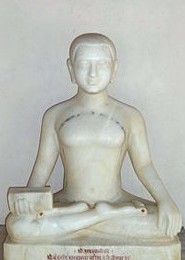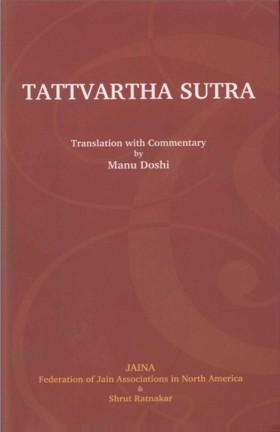10.04: Aupashamikādibhavyatvābhāvāchchānyatra kevalsamyaktvajnandarshansiddhatvebhyah
Audio: Sanskrit: औपशमिकादिभव्यत्वाभावाच्चान्यत्र केवलसम्यक्त्वज्ञानदर्शनसिद्धत्वेभ्यः।
Hindi: क्षायक सम्यक्त्व,क्षायिक ज्ञान, क्षायक दर्शन और सिद्धत्व (को छोड़कर) के अतिरिक्त औपशमिक आदि भावों तथा भव्यत्व के अभाव से मोक्ष प्रकट होता है।
English: Liberation manifests by overcoming all the modes except those of Kshāyik Samyaktva, Kshāyik Jnān, Kshāyik Darshan and Siddhatva as well as the mode of Bhavyatva and Abhavyatva.
This sutra deals with the modes, which are destroyed at the time of liberation. It was pointed out in chapter two that Aupashamik, Kshāyik, Kshayopashamik, Audayik and Pārināmik are the five modes and that different states arise during those modes. This sutra states that liberation is manifested by absence of all the states resulting from those modes, except the states of infinite enlightenment, infinite knowledge, infinite perception and liberation. In other words, only those four states continue to exist in the state of liberation. The sutra thus signifies that with the destruction of Karma, there is also the termination of the states associated with the bondage of Karma.
It would be remembered that the eligibility for liberation was mentioned as a Pārināmik mode in chapter 2. Here the sutra specifies the absence of that mode in the state of liberation. That may appear intriguing at the first sight. The existence of that mode, however, indicates that a soul is eligible for liberation, but has not still attained it. Once a soul attains the liberation, it does not need the eligibility. As such liberation coincides with the absence of that mode also.
 Acharya Umaswati
Acharya Umaswati
